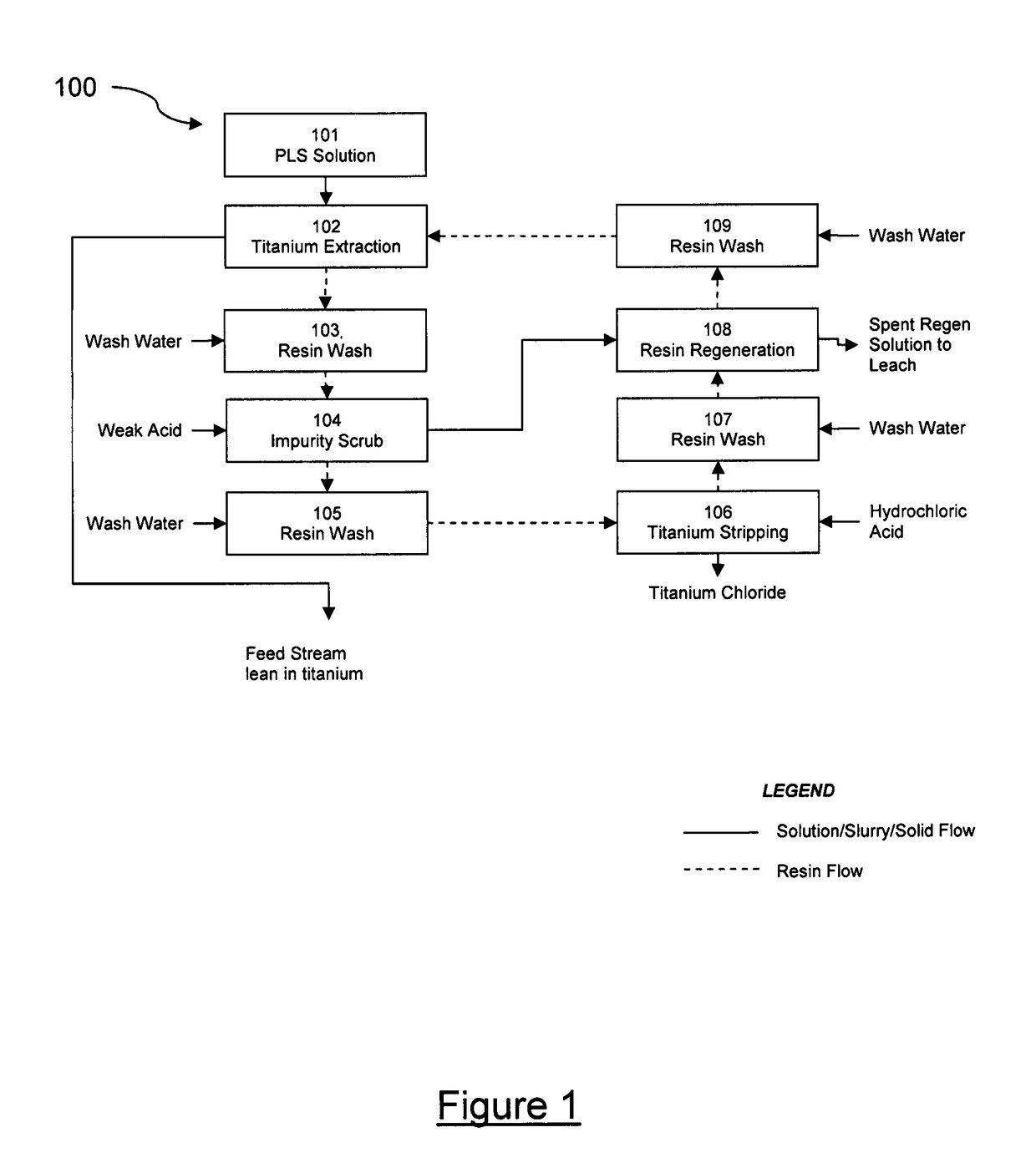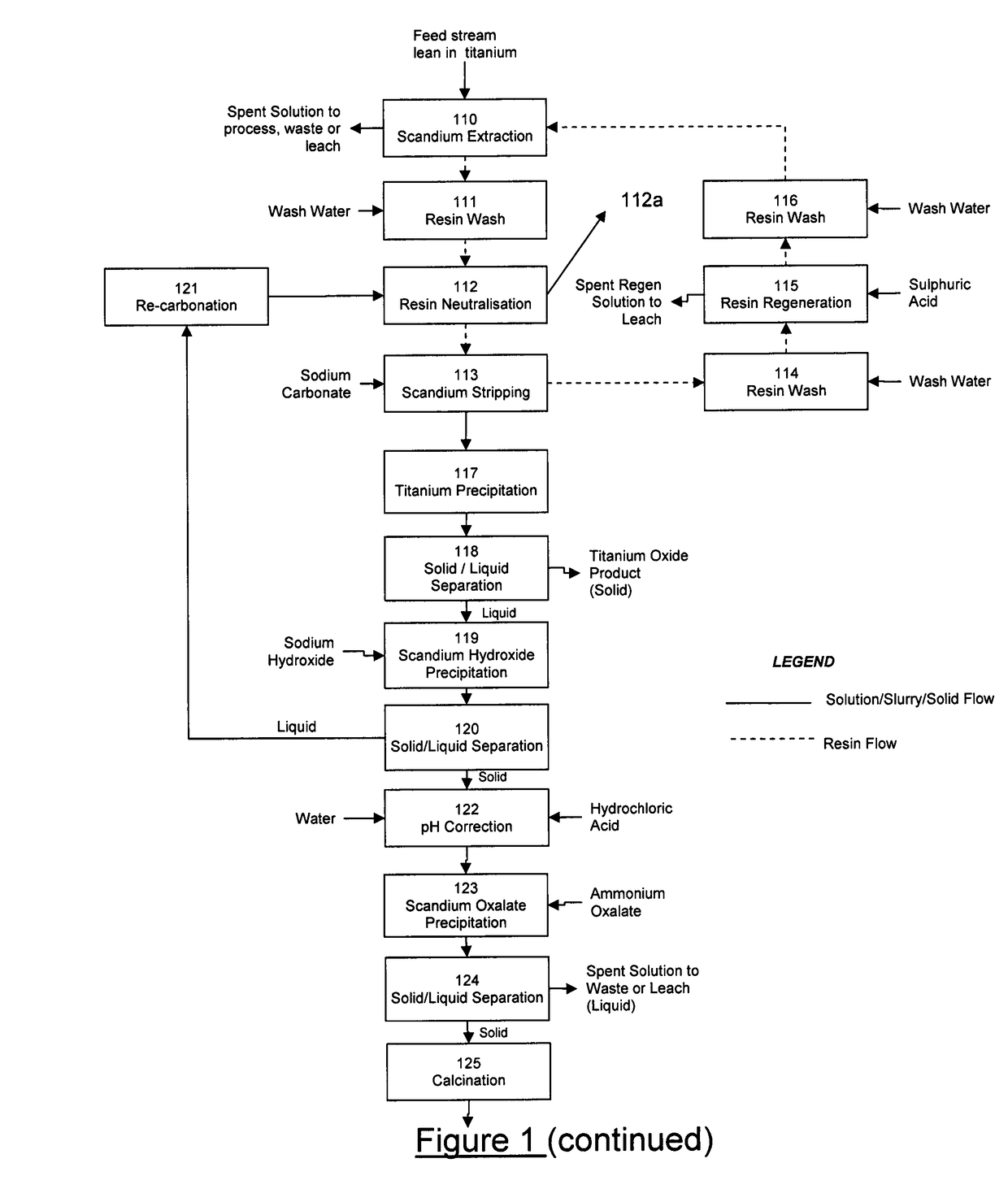Process, method and plant for recovering scandium
a technology of scandium and plant, applied in the field of process, method and plant for recovering scandium, can solve the problems of inability to meet the large-scale production of scandium, inability to recover scandium, and relatively under-use of scandium in the industry, and achieve the effect of facilitating sorption of scandium
- Summary
- Abstract
- Description
- Claims
- Application Information
AI Technical Summary
Benefits of technology
Problems solved by technology
Method used
Image
Examples
embodiment
Preferred Embodiment
[0103]A preferred embodiment of the present invention will now be described in with reference to FIG. 1.
[0104]Process 100 shown in FIG. 1 provides for the extraction and recovery of scandium from feed streams 101, such as acidic solutions pulps using an amino-phosphorus resin, deprotonating the loaded resin prior to stripping using an alkaline reagent such as sodium carbonate, sodium hydroxide or calcium hydroxide, and stripping the loaded resin in a separate step using a reagent such as carbonate, bicarbonate or nitrate.
[0105]The process may also include a preliminary step of extracting titanium from solution. Step 102 includes contacting the feed stream 101 with a weak base resin with polyamine functionality to selectively extract titanium from solution. The feed stream 101 typically has a leach lixiviant in the form of sulphuric acid. In process 100 conditions are controlled to ensure the barren solution contains less than 1 g / L titanium before it is sent to s...
PUM
| Property | Measurement | Unit |
|---|---|---|
| concentration | aaaaa | aaaaa |
| pH | aaaaa | aaaaa |
| residence time | aaaaa | aaaaa |
Abstract
Description
Claims
Application Information
 Login to View More
Login to View More - R&D
- Intellectual Property
- Life Sciences
- Materials
- Tech Scout
- Unparalleled Data Quality
- Higher Quality Content
- 60% Fewer Hallucinations
Browse by: Latest US Patents, China's latest patents, Technical Efficacy Thesaurus, Application Domain, Technology Topic, Popular Technical Reports.
© 2025 PatSnap. All rights reserved.Legal|Privacy policy|Modern Slavery Act Transparency Statement|Sitemap|About US| Contact US: help@patsnap.com



